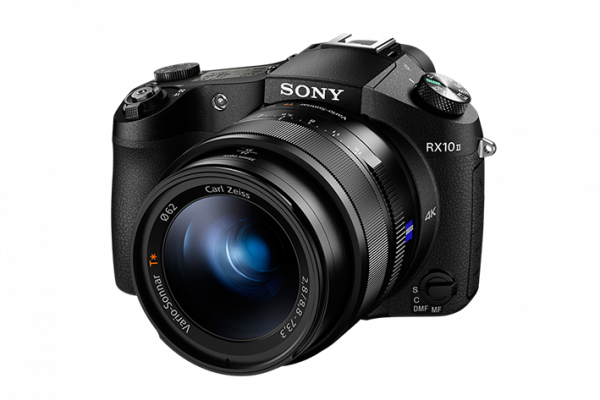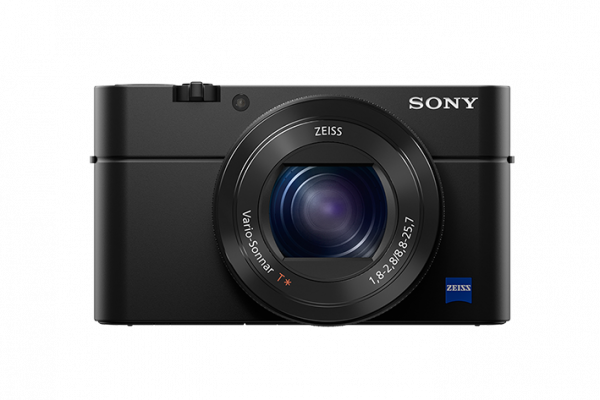Lost in the fanfare of the a7R II launch, Sony has also made major changes to both the RX100 and RX10. The new models look almost identical on the outside to their previous versions, but it is on the inside where big changes have been made. The RX10 II and RX100 IV can record 4K UHD internally just like the recently announced a7R II. Both cameras also feature a 1″ 20.2 MP sensor, using what Sony is calling a ‘Stacked CMOS’ design. Stacked CMOS separates the photosensitive regions and the supporting circuitry into different layers, maximising the proportion of each pixel that can be light sensitive. It is no surprise that Sony is at the cutting edge of sensor technology as they own more than 40% of the worlds image sensor market.

By using Sony’s new stacked CMOS sensor which both the the RX100 IV and RX10 II share, the cameras are capable of a 5X faster information readout from the sensor than the previous generation models. The benefit of this faster readout is the ability to record 4K video at bitrates up to 100 Mbps and higher maximum frame rates. The cameras smaller 1″ sensor makes this possible because the photosensitive region and the circuitry aren’t competing for space, both can be maximised, allowing for potentially more light-gathering area, and more sophisticated logic to be performed on-chip.
When shooting video at high frame-rates on the RX100 IV and RX10 II the camera is doing a clever trick of taking a lower pixel-count readout and up sampling it. Depending on the frame rate you choose, the up sampling can be quite minimal. The cameras feature two high frame rate (HFR) modes: quality priority or shoot time priority. Shoot time priority halves the cameras resolution to allow you to record for longer. Both modes use a memory buffer that is similar to how the Sony FS700 captures HFR material internally. The frame rates offered are in multiples of 24 or 25fps, depending on whether you shoot in PAL or NTSC. The end trigger mode also enables you to capture 2 or 4 seconds before the MOVIE button is pressed.
To give you an examples of frame rates in regards to pixel capture:
In Quality Priority mode
960/1000fps mode yields only 1136 x 384 pixel capture
480/500fps made from 1676 x 566 pixels
240/250fps from 1824 x 1026 capture.
It is still pretty impressive to see that you can record 240/250fps at 1824 x 1026 which will requires the camera to do only minimal upscaling to achieve a full HD image. Unfortunately if you want to capture 960/1000fps the camera will have to upscale the image from 1136 x 384 to 1920 x 1080 which may not produce very pleasing results.

Please be aware that the focal length of the RX10 II’s lens with change if you are shooting at high frame rates. This entirely depends on the amount of upscaling the camera needs to do. At 240fps there is not much change but at 960fps the lenses minimum focal range moves out to 41mm.
{HFR 960fps] f=41-330mm (Quality Priority), f=59-460mm (Shoot Time Priority)
[HFR 480fps] f=28-233mm (Quality Priority), f=41-330mm (Shoot Time Priority)
[HFR 240fps] f=26-212mm (Quality Priority), f=28-233mm (Shoot Time Priority)
The RX10 II can record 4K footage for up to 29 minutes at a time, but the smaller RX100 IV is limited to clips of 5 minutes, which will make recording 4K on the camera unsuitable for a lot of applications. The 5 minute record limitation looks to be in place mainly because of overheating concerns. It is interesting to see that the a7R II which is is a similar size camera doesn’t seem to have the same recording time limitations. Sony is obviously doing something different with that camera to disperse the heat generated from the sensor when recording in 4K.
Both cameras use the XAVC S format to record up to 100Mbps in 4K UHD but also offer the option to record in AVCHD in HD only. Various picture profiles including S-Log2 gamma are available as well as other movie recording features such TC/UB, rec control and dual video recording. Dual Rec still shooting during movie recording is another new feature that allows the user to capture 17MP stills images while simultaneously recording video.
For those concerned about rolling shutter, Sony claims the new sensor’s high readout speed helps to enable the Anti-Distortion Shutter, to greatly reduces image distortion caused by the rolling shutter phenomenon.
The RX10 II looks to be a nice upgrade from the original RX10. It features the same 24-200mm constant f2.8 aperture lens and 1″ sensor that is certainly capable of letting you achieve reasonable shallow depth of field if used correctly. It is clearly a more practical camera for recording video given its feature set and longer 4K recording times. It still maintains the impressive built in 3 step built in ND filter from the previous version.
Sony’s engineers judge that their new 1-inch-type stacked CMOS sensor is roughly five years ahead of anything else on the market in terms of specifications. It will be interesting to see how this new technology extends over to real world performance. It is interesting to see Sony push the boundries of technology and they seem to be leaving other manufacturers to play catch up. My only concern is that Sony are bringing out new technology so quickly and replacing models almost as often as Apple is updating iPhones, that you really need to buy a new release as soon as it comes out to get maximum usage out of it before it becomes superseded.
Movie recording modes for RX10 II:
NTSC/PAL Selector: [PAL] mode
AVCHD: 28M PS (1,920×1,080/50p) / 24M FX (1,920×1,080/50i) / 17M FH (1,920×1,080/50i) / 24M FX (1,920×1,080/25p) / 17M FH (1,920×1,080/25p), XAVC S 4K: 25p 100M (3,840×2,160/25p) / 25p 60M (3,840×2,160/25p), XAVC S HD:50p 50M (1,920×1,080/50p) / 25p 50M (1,920×1,080/25p) / 100p 100M (1,920×1,080/100p) / 100p 60M (1,920×1,080/100p), MP4: 28M (1,920×1,080/50p) / 16M (1,920×1,080/25p) / 6M (1,280×720/25p)
NTSC/PAL Selector: [NTSC] mode
AVCHD: 28M PS (1,920×1,080/60p) / 24M FX (1,920×1,080/60i) / 17M FH (1,920×1,080/60i) / 24M FX (1,920×1,080/24p) / 17M FH (1,920×1,080/24p), XAVC S 4K: 30p 100M (3,840×2,160/30p) / 30p 60M (3,840×2,160/30p) / 24p 100M (3,840×2,160/24p) / 24p 60M (3,840×2,160/24p), XAVC S HD:60p 50M (1,920×1,080/60p) / 30p 50M (1,920×1,080/30p) / 24p 50M (1,920×1,080/24p) / 120p 100M (1,920×1,080/120p) / 120p 60M (1,920×1,080/120p), MP4: 28M (1,920×1,080/60p) / 16M (1,920×1,080/30p) / 6M (1,280×720/30p)
HFR (High Frame Rate) recording modes:
NTSC/PAL Selector: [PAL] mode
XAVC S HD:50p 50M (1,920×1,080/250fps), 50p 50M (1,920×1,080/500fps), 50p 50M (1,920×1,080/1000fps) / 25p 50M (1,920×1,080/250fps), 25p 50M (1,920×1,080/500fps), 25p 50M (1,920×1,080/1000fps)
NTSC/PAL Selector: [NTSC] mode
XAVC S HD:60p 50M (1,920×1,080/240fps), 60p 50M (1,920×1,080/480fps), 60p 50M (1,920×1,080/960fps) / 30p 50M (1,920×1,080/240fps), 30p 50M (1,920×1,080/480fps), 30p 50M (1,920×1,080/960fps) / 24p 50M (1,920×1,080/240fps), 24p 50M (1,920×1,080/480fps), 24p 50M (1,920×1,080/960fps)
Quality Priority:240fps/250fps (1,824×1,026), 480fps/500fps (1,676×566), 960fps/1000fps (1,136×384)/Shoot Time Priority: 240fps/250fps (1,676×566), 480fps/500fps (1,136×384), 960fps/1000fps (800×270)
The RX100 IV will retail for $949 US and the RX10 II will be available for $1300 US.





